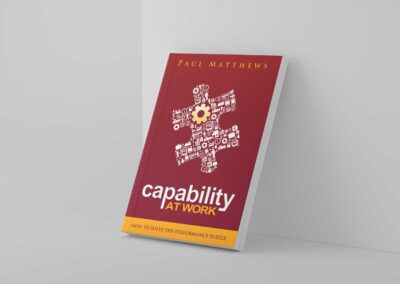Part 1 of this article discussed the fact that effective change in the 21st Century starts with a clear sense of purpose (the why) supported by a clear vision for the future of the business.
What does that vision need to deliver, to effectively support your purpose?
It needs to illuminate the understanding of the stakeholders (customers, users, suppliers, investors, staff) in respect of:
- The mission of the business – How we currently (and in the near term) intend to achieve our purpose
- Our value to our customers/clients – How what we currently do helps them (Which is not the same as “what we do for them”!)
- Our value to our staff – Why they want to work for us (having a job, earning a wage are good reasons, but not sufficient)
To develop the ability to sustain regular change – and use it to steer your business successfully – you need to always ensure a strong link between the purpose, vision and the specific objectives of change – i.e. the outcomes you are seeking.
When considering those outcomes, it’s important to validate them by asking:
- How do they enhance or benefit our mission and values?
- Are we consistent with our purpose?
Once you have clarity about the changes you are considering then you can move on to the next key step – Design.
The design of your change(s) may cover many factors or few. When contemplating major change, you might consider:
- New products &/or services
- New or enhanced processes &/or systems
- Functional &/or organizational structures
- Etc.
The key point is to think about these factors as design issues. In other words, think about their shape and form, their impact on the rest of the environment in which they will exist (both external and internal).
How will the change(s) be implemented? Will they be large or small? Should they be incremental or “big bang”? What skills have you got in-house and which will you need to bring in from outside? How will the impact of developing and implementing the change(s) stretch – or over-stretch – your team? Which external resources will you need to secure?
Once you have clarity on all the design factors, then you can focus on the crucial fourth step – Implementation.
In today’s world of continuous change, it is advisable to develop your own approach to change implementation. I don’t mean that you should start from scratch. There are lots of good methodologies out there to guide you on how to implement change. However, all organisations have their own style and culture. Therefore, for effective implementation and an approach that’s sustainable, it’s important that you develop an implementation discipline that works best in your environment.
There are some key building blocks, however, that you should ensure are in place, whatever your implementation approach:
- Project management.
Deploy basic PM disciplines to ensure clarity about: timescale, budget, deliverables, management responsibilities, resources, success criteria, risk evaluation, quality & performance standards
- Accountability and authority
Make it clear who is accountable for what results and what scope of authority those people have. Ensure the levels of authority are commensurate with the importance and urgency of the change(s)
- Communications
Develop a specific communications plan for the change(s), covering message content, timing and channels for delivery (by stakeholder community)
- Engagement and mobilization
Plan for how you will engage with those impacted by the change(s) and how you will go about mobilizing the organization to effect the change(s) when ready
- Measurement and feedback
Establish specific measures for determining the effectiveness of the change(s) and implement fast feedback mechanisms (so that you may make rapid adjustments in the event you are not realizing the anticipated benefits)
In summary, to enable your organization to adopt a culture of embracing continuous change in the 21st century requires you to focus on 4 key steps:
1. Purpose
Be clear about the purpose, cause or belief that lies behind why you are in business. People don’t buy what you do, they buy why you do it.
2. Vision
Establish a clear vision with unambiguous linkage to any change you decide to implement. How does it support your purpose? How does it benefit what you do for your customers? How will it engage your staff?
3. Design
Design your change. What aspects of the business will/should it impact? What’s the right scale of change? What are the resource, time, and business-as-usual impacts?
4. Implementation
Develop a methodology for implementing change that combines good practices with what works in the culture and style of your business.
Businesses that are more able to consistently adapt and respond to the changing environment in which they operate will sustain their competitive edge over the long term. In so doing, they will be among that rare breed of business that truly understands and remains true to their purpose – as a consequence of which their value will continue to rise.
I hope you are one of them.


